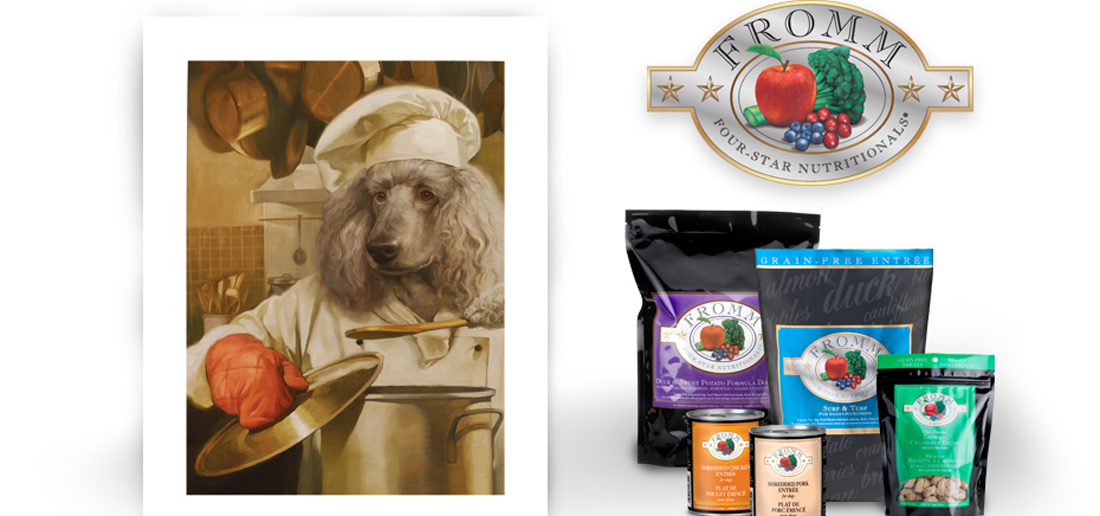
What We Feed Our Dogs & Fromm Puppy Gold
Our breeder-curated recommendations for feeding German Shepherd puppies and adults. Learn portion sizes, schedules, and how to transition foods without tummy trouble.
On this page
What should I feed my German Shepherd?
We recommend a complete and balanced Fromm Puppy Gold large-breed formula appropriate for your dog’s life stage. Look for an AAFCO statement for growth (puppies), including large-size dogs (70 lb+ as adult), or adult maintenance for grown dogs. Choose foods with quality animal protein as the first ingredient.
“Do not feed any other brand when you receive your puppy — or your puppy may become severely ill.”
Please only feed our puppies Fromm Puppy Gold — Do not feed any other brand when you receive our puppy
, for about 6 weeks. After this period you can choose to alter his food to any other brand you wish.
Fromm Puppy Gold is designed for puppies and pregnant or nursing mothers. It is naturally formulated with duck, chicken, lamb, whole eggs & real Wisconsin cheese. In addition, our gold recipes are enhanced with probiotics to aid digestion and salmon oil for a healthy coat.
Recommended Feeding Schedule
General guidelines for healthy puppies and adults. Always adjust based on body condition, activity level, and your veterinarian’s advice.
Puppies
- 8–12 weeks: 3–4 meals per day (small portions).
- 3–6 months: 3 meals per day (small portions).
- 6–12 months: 2–3 meals per day (small portions)
- 12–18 months: transition to adult food when growth plates near closure
Adults
- Feed twice daily—morning and evening—to match your dog's routine.
- Split daily portion if your dog eats too quickly
- Provide fresh water at all times
How much should I feed?
Start with the feeding chart on your chosen food and adjust weekly. Use your hands and eyes—not just the bag. You should feel ribs with a light fat cover and see a defined waist from above.
| Expected Adult Weight | Puppy (10–16 wks) | Juvenile (6–12 mo) | Adult (18 mo+) |
|---|---|---|---|
| 60–70 lb | 3–3.5 cups/day | 3–3.25 cups/day | 2.5–3 cups/day |
| 70–85 lb | 3.5–4 cups/day | 3.25–3.75 cups/day | 3–3.5 cups/day |
| 85–100 lb | 4–4.5 cups/day | 3.75–4.25 cups/day | 3.5–4 cups/day |
*1 cup = 8 fl oz. These are starting points for typical kibble densities; check the calorie content on your bag and monitor body condition.
Body Condition Score (BCS)
- Too thin: ribs/spine visible → increase 10–15%
- Ideal: ribs felt easily, visible waist → maintain
- Overweight: hard-to-feel ribs → reduce 10–15%
Safe Food Transition Plan
| Days | Old Food | New Food |
|---|---|---|
| 1–3 | 75% | 25% |
| 4–6 | 60% | 40% |
| 7–9 | 50% | 50% |
| 10–12 | 25% | 75% |
| 13+ | 0% | 100% |
If stool softens, stay at the current ratio until normal for 2–3 days, then continue. Add plain pumpkin (1–2 tsp) or a vet-approved probiotic as needed.
Ingredients to Avoid
- Onions, garlic, grapes/raisins, xylitol
- Cooked bones; high-fat table scraps
- Over-supplementing calcium in puppies
- Rapid diet changes without transition
Frequently Asked Questions
Should I feed raw?
Some owners choose raw diets, but they require careful formulation and safe handling. If you are interested, consult a veterinary nutritionist to ensure complete and balanced feeding for large-breed growth.
Do German Shepherds need large-breed puppy food?
Yes. Large-breed formulas manage calcium and energy to support steady growth, helping reduce orthopedic stress during development.
Can I change brands?
Yes—use the transition schedule above and monitor stools and body condition. Keep changes gradual.
Need personalized advice?
We’re happy to help you pick the right food and portions for your puppy’s age and activity level.